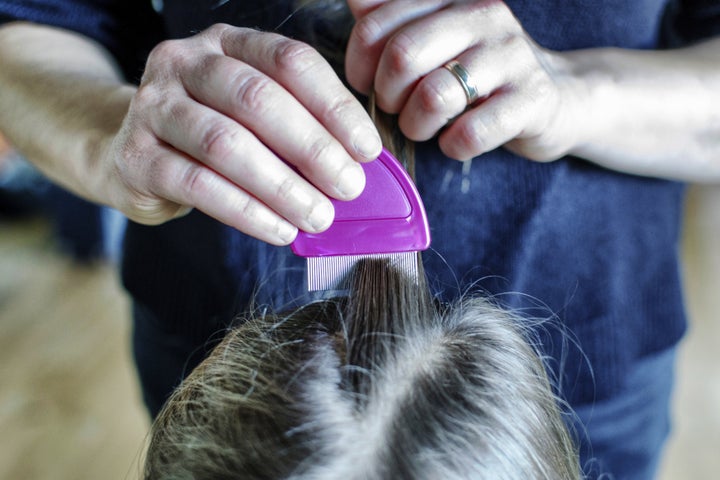Returning to school is inevitably the beginning of head lice season for kids, but parents are now being warned about “super lice”.
This “mutated breed” of lice, that were first flagged up as a potential concern in the UK in June 2016, are proving to be much harder to treat.
Speaking to the Sunday People on Sunday 18 September 2016, Dr Paul Stillman said: “Super lice are head lice that have become more resistant to ordinary chemical treatments.
“In the last few years many people in America have had lice that don’t respond to conventional insecticides.
“We’re starting to see the same problem in the UK.”

The “super lice’s” resilience is caused by a genetic mutation that means they are resistant to permethrin, an ingredient in head lice treatment.
Dr Stillman said the increase in resistant head lice is caused by people “overusing products”.
“Treatments like Vamousse are effective on unhatched eggs as well as lice and only need to be used once,” he said.
In June 2016, parents were warned that “super lice” could potentially reach the UK after a study by Southern Illinois University.
Researchers found a certain type of head lice were resistant to “permethrin“ in 25 American states.
“What we found was that 104 out of the 109 lice populations we tested had high levels of gene mutations, which have been linked to resistance to pyrethroids,” Dr Kyong Yoon, a member of the research team, said according to the Mirror.
Pyrethroids are chemicals that kill insects, including mosquitoes and include permethrin.
They said weather conditions in Britain - a mild winter and damp spring - created “ideal breeding conditions” for lice.
Dr Nitin Shori, medical director of the Pharmacy2U Online Doctor service and a working NHS GP told The Huffington Post UK: “Over the years head lice have developed a certain resistance to some of the traditional insecticides – but there are still a variety of helpful lotions and sprays currently available.
“Some treatments are silicone or oil-based and have a physical action, rather than a chemical one. Carefully combing wet hair with a special comb can also allow you to physically remove the lice and their eggs.
“It’s extremely important to follow the instructions thoroughly though. Make sure no eggs remain attached to the hair and check for re-infestation.
“If the treatment doesn’t appear to be working you should consult with a pharmacist or GP.”
The National Pediculosis Association (NPA), a charity dedicated to researching and removing the infestation of lice, has previously issued guidance on what to do if treatment fails.
“Never resort to dangerous remedies such as lindane, kerosene, or pet shampoos,” they advise.
“Never use a lice spray. Lice sprays are pesticides marketed for use on children’s bedding, cars, rugs, garments, and furniture.
“Manual removal is crucial. Since head lice move quickly throughout the head, it may be helpful to have two people checking an infested person at the same time.”